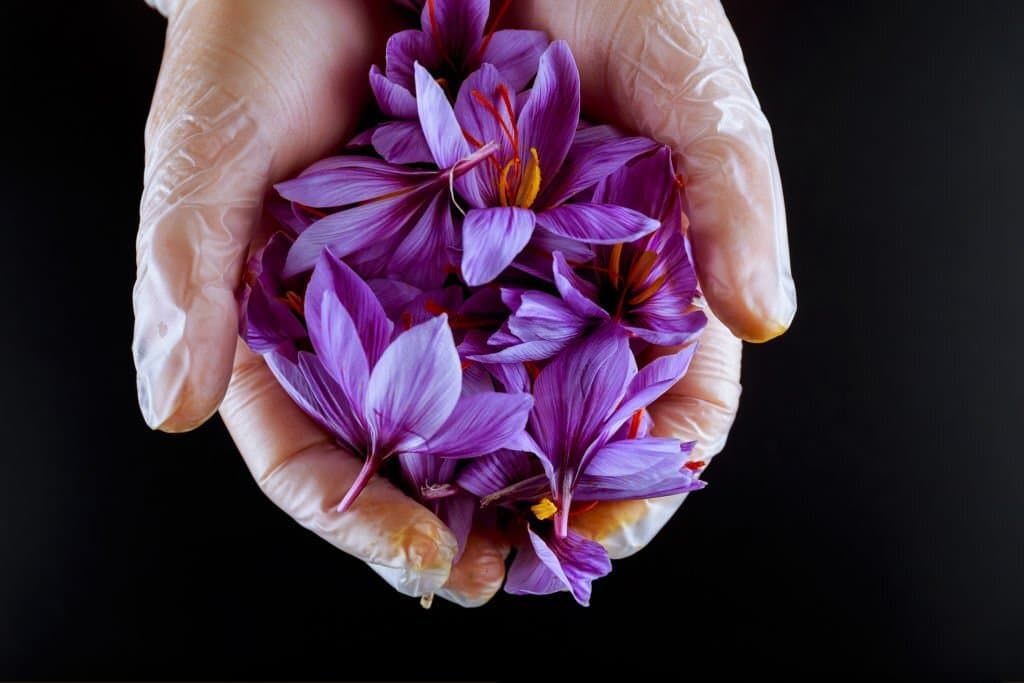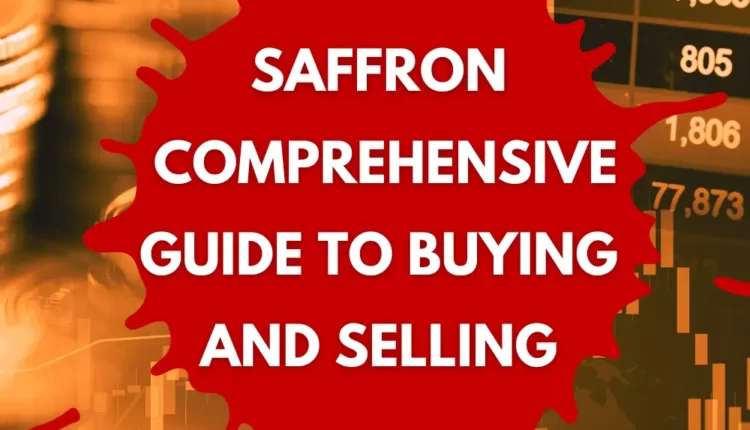Saffron, the world’s most expensive spice, has been highly sought after for centuries. Derived from the stigma of the Crocus sativus flower, saffron is known for its unique flavor, aroma, and vibrant color.
In this comprehensive guide, we will explore the intricacies of buying and selling saffron, including factors that influence its quality and price, as well as tips for making informed purchasing decisions.
We will also delve into the various culinary and medicinal uses of saffron, and how it has been used throughout history for its therapeutic benefits.
Whether you are a chef looking to incorporate saffron into your dishes, a producer seeking to enter the saffron trade, or a consumer interested in the health benefits of this precious spice, this guide will provide you with the knowledge and tools to navigate the saffron market with confidence.

What is Saffron:
Saffron is the dried stigma of the Crocus sativus flower, a perennial plant native to Southwest Asia. Each flower produces only three stigmas, which must be handpicked during a short annual blooming period. Due to its labor-intensive production process and limited availability, saffron commands a high price in the market.
The History of Saffron:
It has a rich history dating back over 3,500 years. It was first used as a dye, medicine, and culinary ingredient in ancient Persia. The spice later spread to other parts of the world, including Greece, Rome, and India, where it became an integral part of various cultural and religious practices.
Check out our article on the Discovering The Saffron Uses And Buying Tips: The Ultimate Guide 2023
Factors Influencing Saffron Quality and Price
Origin
The origin of kesar plays a crucial role in determining its quality and price. The most highly-prized saffron comes from Iran, which produces around 90% of the world’s supply. Other notable saffron-producing regions include Spain, India, and Greece. Each region’s saffron has a distinct flavor profile and aroma, which may influence buyers’ preferences.
Grade
It is graded based on its color, aroma, and flavor. The International Organization for Standardization (ISO) has established a grading system (ISO 3632) to measure saffron’s quality. Higher-grade saffron has a more intense color, stronger aroma, and richer flavor, which typically commands a higher price.
Purity
Purity is another essential factor in determining saffron’s value. Pure saffron consists solely of the red stigma, with no yellow styles or other plant parts included. Adulterated saffron, which may contain added substances like turmeric or marigold petals, is less expensive but also offers inferior quality.
Tips for Buying Saffron:
Know Your Source
When buying saffron, it’s essential to purchase from a reputable source. Look for suppliers who provide detailed information about the saffron’s origin, grade, and purity. A trustworthy vendor will also be willing to provide lab test results or ISO certification to validate their claims.
Examine the Saffron:
Before making a purchase, closely examine the saffron’s appearance. High-quality saffron should have a deep red color, with minimal yellow styles present. The threads should be dry and brittle to the touch, which indicates proper drying and storage.
Sample the Aroma and Flavor
If possible, sample the saffron’s aroma and flavor before buying. High-quality saffron should have a strong, yet pleasant aroma and a slightly bitter, yet nuanced flavor.
Tips for Selling Saffron:
Establish a Niche Market
To successfully sell saffron, it’s essential to identify a niche market that values the spice’s unique characteristics. Potential markets include gourmet food stores, specialty spice shops, and high-end restaurants.
Offer a Quality Product
Ensure that the saffron you’re selling meets high-quality standards. This includes sourcing saffron from reputable producers, ensuring proper storage, and providing customers with detailed information about the saffron’s origin, grade, and purity.
Build a Strong Brand
Develop a strong brand identity that emphasizes the quality and uniqueness of your saffron. This includes creating an eye-catching logo, developing a compelling brand story, and consistently delivering exceptional customer service.
Check out our article on the Maximizing Profits With Saffron Market Forecast 2023
Frequently Asked Questions
How can I store saffron to maintain its quality?
Store saffron in an airtight container, away from direct sunlight, moisture, and heat. Properly stored saffron can retain its quality for up to two years.
How much saffron should I use in my recipes?
Saffron is a potent spice, and a little goes a long way. Typically, a pinch (about 20 threads) is enough to flavor a dish for four people. However, the amount can vary depending on the recipe and personal taste preferences.
Is there a more affordable alternative to saffron?
While there is no direct substitute for saffron, some spices, like turmeric or safflower, can mimic its color in dishes. However, these alternatives do not replicate saffron’s unique flavor and aroma.
How can I determine if the saffron I’m purchasing is of high quality?
Lookfor saffron with a deep red color, a strong aroma, and a slightly bitter flavor. Purchase from a reputable supplier who provides information about the saffron’s origin, grade, and purity, and is willing to provide lab test results or ISO certification.


